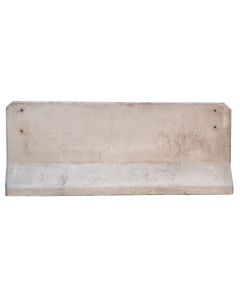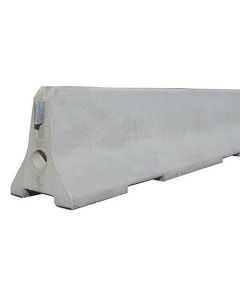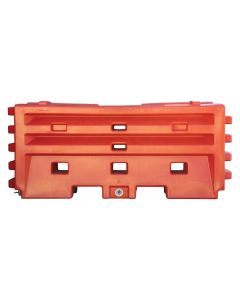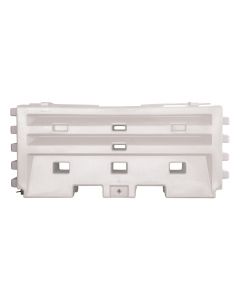What is a concrete jersey barrier?
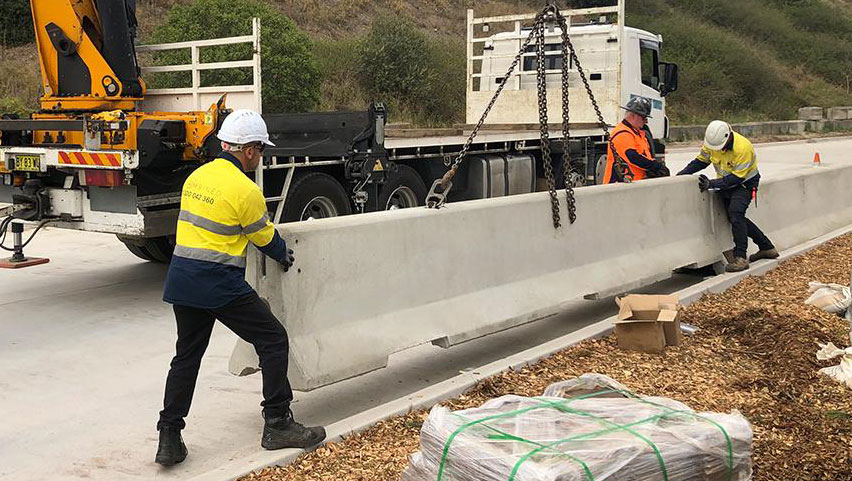
Concrete Jersey barriers are designed to minimize vehicle damage in the incident of contact or crossovers as a result of head-on collisions, serving to separate and reroute traffic. The modular concrete barrier was developed to obstruct the need for expensive median barrier maintenance in locations with a high probability of accidents. In turn, these barriers control the amount of out of control large vehicles. As it tires up on the lower sloped face, it's lifted and pivoted away from oncoming traffic, ensuring the safety of others and minimizing sheet-metal damage.
Use of concrete Jersey barriers
Using the car’s momentum, the barrier absorbs the impact of the vehicle or collision and slides the vehicle parallel along the barrier to prevent a rollover, and absorbing proportional impact from a smaller chassis. A concrete Jersey barrier typically stands 81cm tall, made of steel-reinforced poured concrete, embedded with reinforcement protruding from either end. Their generic use in road construction allows it to be embedded in permanent emplacements when linked with one another.
They can be used by workers to prevent access to restricted areas where traffic must be redirected or to cordon off construction sites. These barriers ensure traffic moves in a direction that will prevent an ugly traffic jam. Jersey barriers can be used for a temporary or long term project, such as those used as road dividers. Additionally, they're commonly utilized as noise control agents on construction sites, where noise pollution is easily absorbed by the concrete barriers.
Development
These heavy-duty separation devices were first used in the US state of California in 1946. The state replaced wood beam guardrails on the Ridge Route Highway, commonly known as the ‘Dead Man’s Curve’, a road that held a 6 percent downgrade, resulting in an astounding amount of head-on collisions. Come 1949, the state of New Jersey implemented concrete structures that served as a preventative parabolic median barrier. These would soon be installed on the Jugtown Mountain section of US Route 22 in Hunterdon Country, who faced a similar issue when considering the amount and severity of head-on collisions.
The original barriers measured 48cm high and 76cm wide, with 5cm buried underneath the road for stability. While the initial designs of these barriers were effective in reducing collisions and ensuring road safety, New Jersey state highway engineers continued to alter the design and development of these barriers, creating progressively larger prototypes based on observed accidents in their developmental stage. In 1959, the standard barrier height was revised to an 81cm height by 60cm wide base.
Advantages
For years, concrete was the material of choice for Jersey barriers. However, as time progressed, their plastic counterparts rose in popularity.
Concrete barriers are incredibly strong and durable. They can’t be knocked over easily, and are ideal choices for long term projects. Jersey barriers provide workers with safety in high-speed areas, protecting them from crashes and collisions, in contrast to plastic barriers, which wouldn’t be able to halt a fast-moving or heavy vehicle.
DB80 advantages
- Fully approved road barrier
- MASH and NCHRP350 Tested
- Easy to transport, install and dismantle
- Options for any site - 6m, 4m & 2m options
Disadvantages
However, these concrete barricades may be too heavy to move, rearrange, or re-install for other projects. Due to their weight, installing and removing these barriers takes time and a significant amount of labour hours. Drivers may dispute the visibility of these barriers, especially if they’re grey or white, in comparison to their plastic counterparts which are typically neon safety orange.
Advantage of plastic barriers
Unfortunately, pre-cast Jersey barriers usually only have a lifecycle of three to five years as a serviceable safety barrier. After its life as a safety barrier, it becomes difficult to recycle, which is why many companies chose to opt for the Plastic Jersey barrier, made of low-density, heavy-duty polyethylene, an easy plastic to recycle. A reusable and cost-effective alternative to the concrete Jersey barrier, these barriers allow entities to reduce their capital expenditure in ways they see fit.
Additionally, water filled barriers are typically orange and white, providing higher visibility and decreasing the potential for collisions, as well as reducing transportation costs that one would face with concrete barriers. Polyethylene requires less maintenance, has a longer life span, and requires less storage space, albeit not as durable and strong as their concrete counterparts.
Conclusion
Horizontal or vertical, this barrier plays an integral role in traffic control and security. With their solid base and practical nature, these barriers provide workers with a sense of safety, as well as being ideal for long and short term projects where traffic needs to be rerouted or noise pollution needs to be reduced.
Jaybro supply a wide range of precast concrete and plastic water filled barriers, servicing civil, construction and infrastructure projects across Australia and New Zealand.
 Sign In
Sign In 

